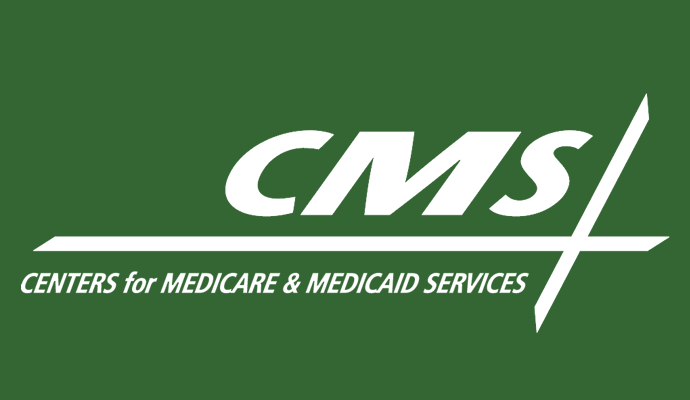CMS Stops Accepting New Direct Contracting Applications
Organizations that previously applied to the Global and Professional Direct Contracting Model and deferred will still be able to participate as planned.

Source: Xtelligent Healthcare Media/Centers for Medicare & Medicaid Services
- CMS has announced that it will not be soliciting any more applications for the Global and Professional Direct Contracting Models slated to launch on January 1, 2022.
Organizations that had already applied to the model—either for the Implementation Period or Performance Year (PY) 2021—and had deferred their start date to January 1, 2022, will still be able to participate as expected at the start of next year, CMS added in an email.
However, the agency stipulated that organizations will still have to meet Global and Professional Direct Contracting requirements at that time of the launch date.
Organizations that did not defer participation in PY 2021 of the Global and Professional Direct Contracting Model will also be moving forward as planned on April 1, 2021.
CMS also announced in the email that it has selected 53 organizations to take part in PY 2021 for the two directing contracting options. Of the organizations, 39 are participating in the global risk sharing option and 14 have selected the professional risk shared options.
READ MORE: Preparing Physician Practices for Direct Contracting, Risk Models
Additionally, six organizations will serve as High Needs Population Direct Contracting Entities (DCEs), while 16 organizations are New Entrants DCEs and the remaining 31 are Standard DCEs.
The agency stated in the email that, “The Innovation Center is reviewing its portfolio and learning from the implementation of this model to inform next steps on both the GPDC [Global and Professional Direct Contracting] Model and strategies for population health, risk-based models.”
“The Innovation Center is committed to value-based care, delivering integrated care for dually eligible populations, and addressing health equity,” the email stated.
Under the Biden administration, CMS has already paused the Geographic Direct Contracting Model, an offshoot of the new Global and Professional Direct Contracting Model that ties healthcare payments to the population health and cost outcomes for all residents of a specific area.
In contrast, the Global and Professional options tie payments to providers to attributed Medicare fee-for-service beneficiaries, as well as beneficiaries dually eligible for Medicare and Medicaid and beneficiaries with complex needs.
READ MORE: ACOs Fear Direct Contracting Options Stray Too Far From Providers
The Professional option also offers 50 percent shared savings and losses, and the Global option includes 100 percent shared savings and losses.
Slated to launch on January 1, 2022, the Geographic Direct Contracting Model had also required DCEs to assume full financial risk with 100 percent shared savings and losses.
The Trump administration unveiled the direct contracting options via CMS in 2019. Former CMS Administrator Seema Verma said the direct contracting options would increase value, focus on primary care, and put patients at the center of care.
“Building on the experience of previous models and ideas of past administrations, these models will test out paying for health and outcomes rather than procedures on a much larger scale than ever before,” Verma said at the time. “These models can serve as an inflection point for value-based transformation of our healthcare system, and American patients and providers will be the first ones to benefit.”
Healthcare industry groups, however, were uncertain of the models at first, with many major associations seeking additional information on the ACO-like alternative payment models.
READ MORE: NAACOS Establishes Direct Contracting Taskforce
The National Association of ACOs (NAACOS) also urged CMS to make several programmatic changes, including increasing the shared savings rate for professional DCEs, lowering discount levels for DCE benchmarks, and waiving the two percent retention withhold.
The changes would make the direct contracting options more attractive to ACOs, or accountable care organizations, the group argued.
NAACOS is now welcoming the 53 new DCEs. However, the association is also calling on CMS to extend the Next Generation ACO Model in light of the delay. The full-risk Next Generation ACO Model is sunsetting this year.
“This means Next Generation (Next Gen) ACOs will be forced into the Shared Savings Program next year absent any change from CMS. NAACOS continues to ask CMS to extend the Next Gen Model and believes not allowing another cohort of DCEs creates even more need for CMS to make the model, which is due to sunset at the end of this year, permanent,” the association said in a statement.
Healthcare improvement company Premier Inc. is also asking the CMS Innovation Center (CMMI) to scale the Next Generation ACO Model after the postponement of direct contracting options in the future. It has also urged CMMI to improve the direct contracting opportunities during the pause by reducing discounts, establishing pathways for implementation of capitated payments, and testing alignment, among other recommendations.
“CMMI should use this time to improve the model so that providers are better suited to be the accountable entity,” Blair Childs, senior vice president of public affairs at Premier, said in the statement.
The Biden administration has not indicated when it will be done reviewing the portfolio of CMMI models, including the direct contracting opportunities.
